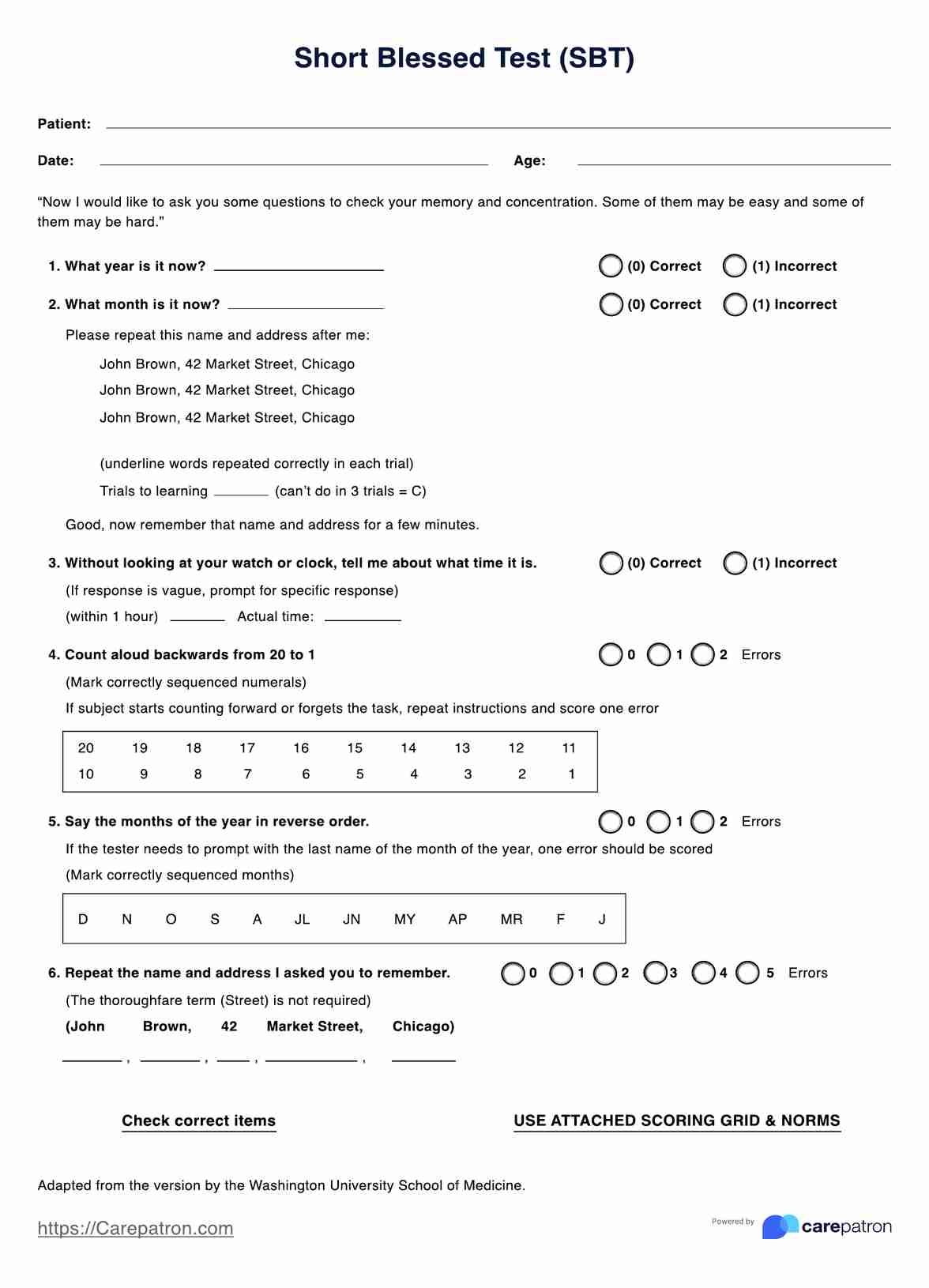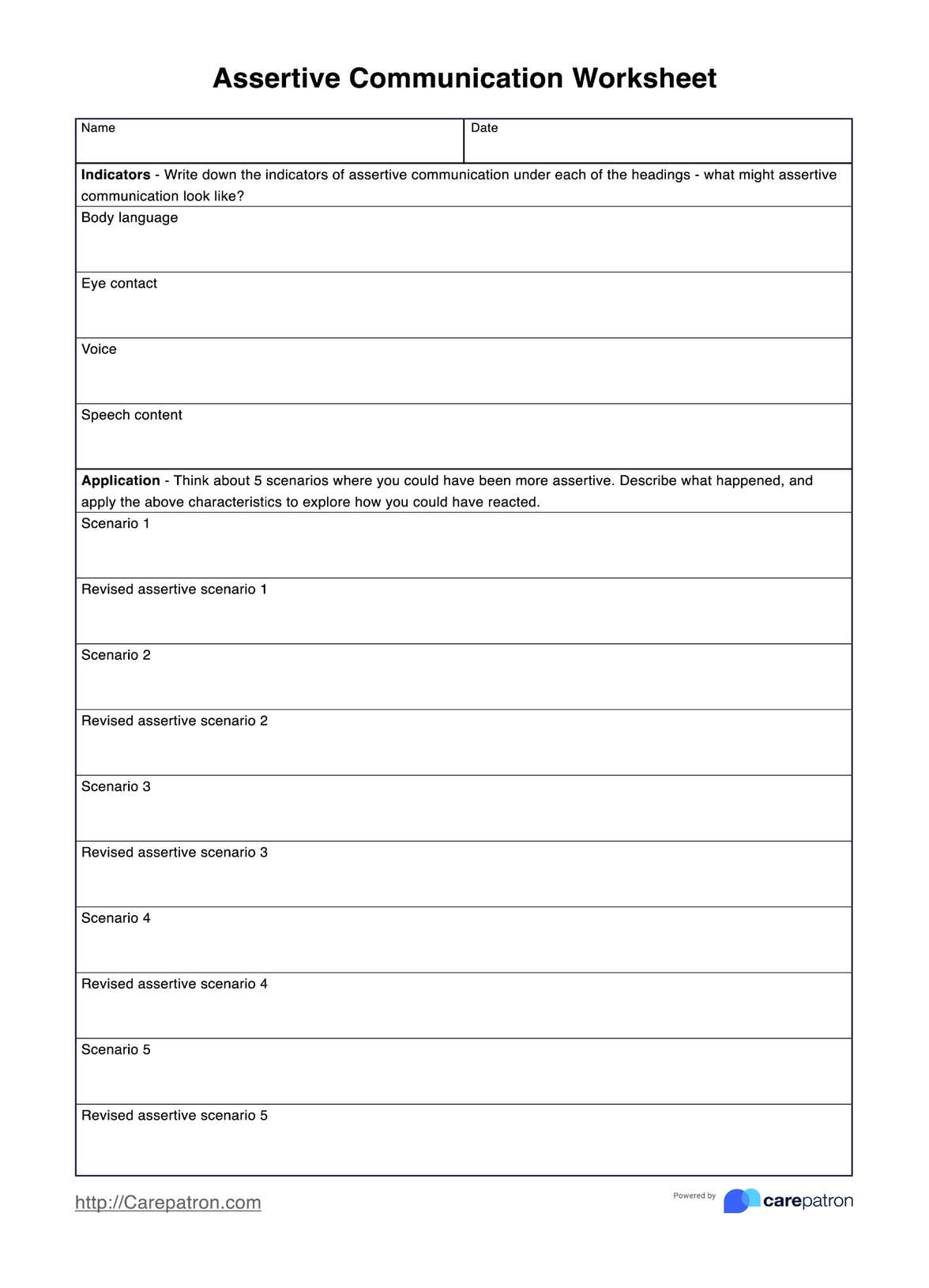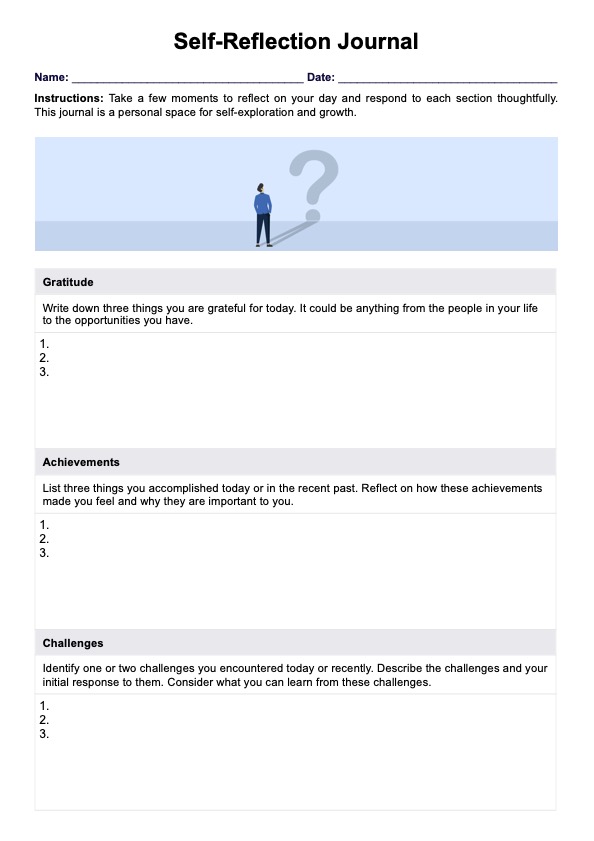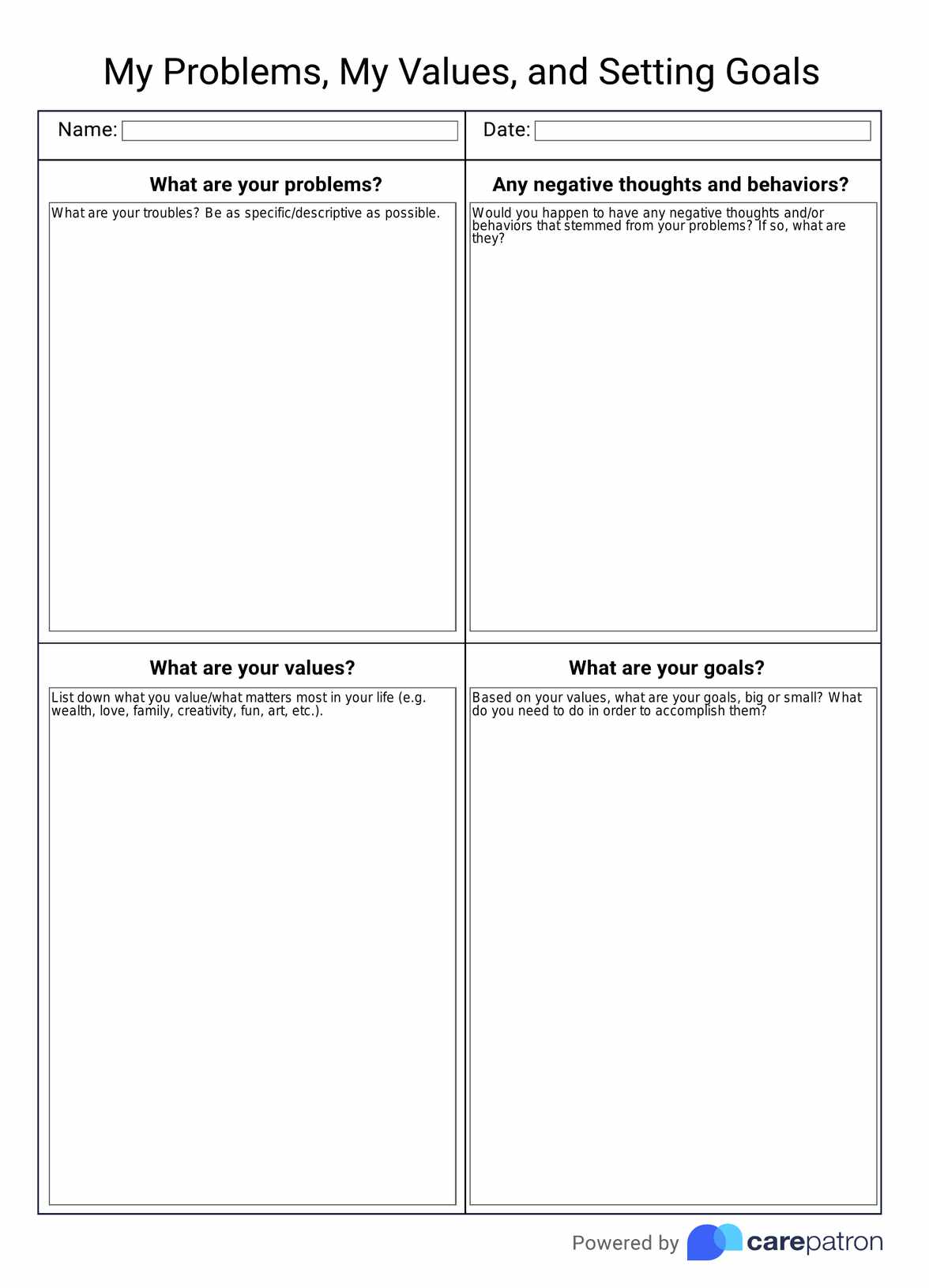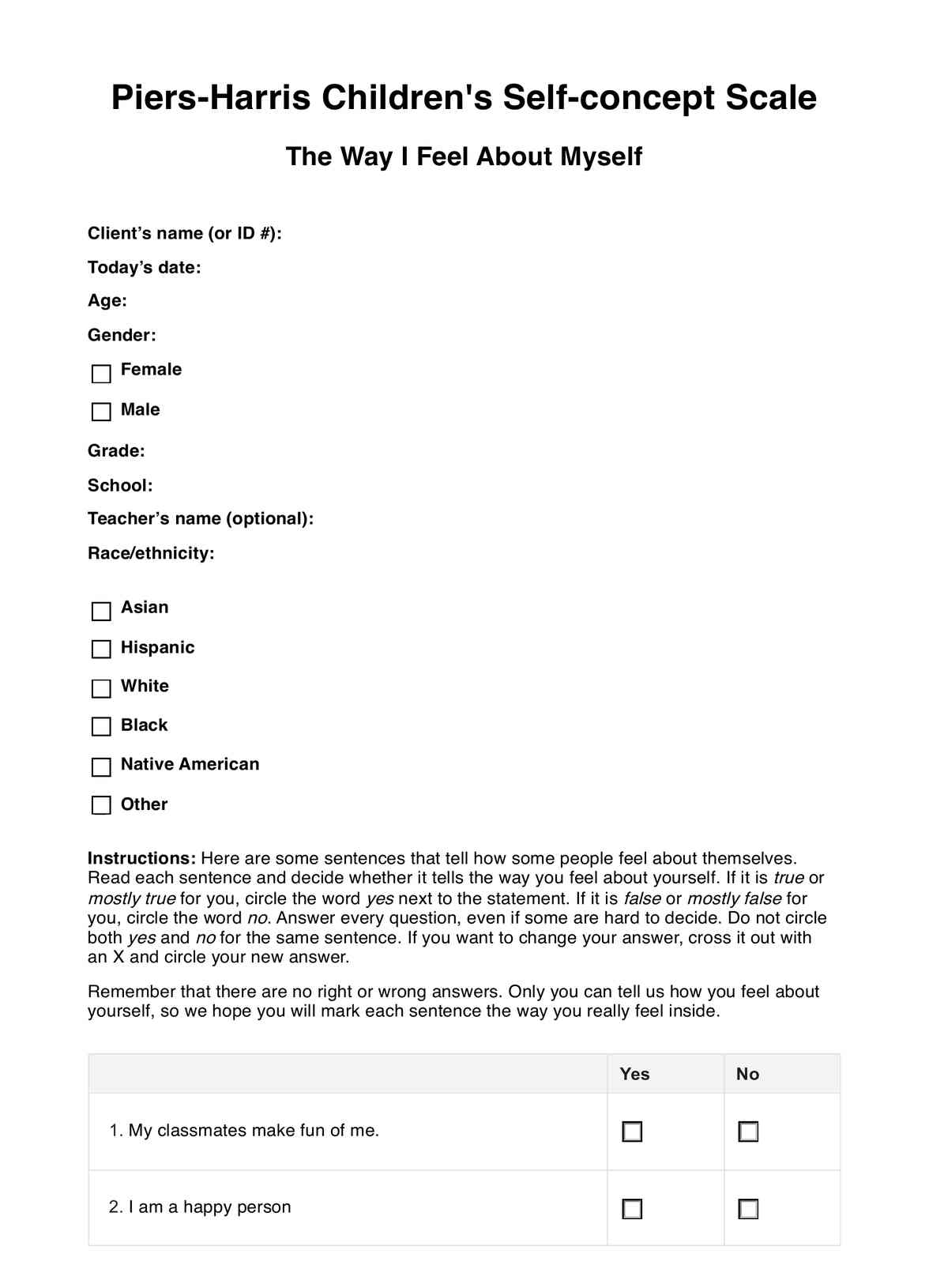Resilience Checkup PTSD Worksheet
Looking for a way to manage PTSD symptoms? Try the Resilience Checkup PTSD Worksheet. This free tool can help increase self-awareness and improve symptom management.


What are Trauma and PTSD?
Trauma is a distressing and often unexpected event that can inflict physical and emotional harm on an individual. It can manifest in various forms, such as accidents, abuse, natural disasters, or acts of violence, leaving a lasting impact on the individual's mental health. Post-traumatic stress disorder (PTSD) is a mental health condition that develops after experiencing or witnessing a traumatic event.
Symptoms of PTSD can be categorized into four types: re-experiencing, avoidance, negative changes in mood or cognition, and hyperarousal. Re-experiencing symptoms include flashbacks, nightmares, or intrusive thoughts about the event. Avoidance symptoms refer to avoiding triggers or anything that reminds the individual of the traumatic event. Negative changes in mood or cognition may include feelings of detachment, guilt, or shame. Hyperarousal symptoms can result in easily startled, difficulty sleeping, or irritability.
Recovering from trauma and PTSD can be challenging, but developing resilience can help individuals overcome these challenges and lead fulfilling lives. Resilience refers to coping with adversity and recovering from difficult experiences. Building resilience can be achieved in several ways, including building a support system, practicing self-care activities, and seeking professional help when needed.
Trauma and PTSD can significantly impact an individual's mental health, but developing resilience can help overcome these challenges. Healthcare professionals can utilize tools like Carepatron to manage patient data securely and efficiently to provide optimal care for PTSD patients.
Resilience Checkup PTSD Worksheet Template
Resilience Checkup PTSD Worksheet Example
How to use the Resilience Checkup PTSD Worksheet:
The Resilience Checkup PTSD Worksheet can be used to identify symptoms, rate their severity, and develop healthy coping strategies. The worksheet provides a framework individuals can use to improve their self-awareness, communication skills, and relationships.
Step 1: Fill out your details
To begin, enter basic information about yourself, including your name, age, and contact information. This information is essential for tracking your progress and monitoring your symptoms.
Step 2: Identify your PTSD symptoms
Next, identify the specific symptoms you're experiencing, such as flashbacks, nightmares, avoidance behaviors, and hyperarousal. This step is crucial because identifying symptoms helps you understand what you're facing and develop coping strategies.
Step 3: Rate the severity of each symptom
Once you've identified your symptoms, rate their severity on a scale of 0 to 10, where 0 represents no symptoms and 10 represents severe symptoms. This step helps you track your symptoms over time and monitor changes in their severity.
Step 4: List healthy coping strategies
List healthy coping strategies that have worked for you or that you would like to try in the future. This step allows you to develop a set of tools you can use to manage your symptoms.
Step 5: Monitor progress
Use the Resilience Checkup PTSD Worksheet to monitor your progress and adjust your coping strategies as needed. Reviewing your worksheet can help you stay on track and improve your coping mechanisms.
Our printable Resilience Checkup PTSD Worksheet is a powerful tool for individuals to manage PTSD symptoms. Following these steps, individuals can identify their symptoms, rate their severity, and develop healthy coping strategies. Creating a personalized plan using the worksheet can help individuals build resilience and lead fulfilling lives.
When would you use this Resilience Checkup PTSD Worksheet?
The Resilience Checkup PTSD Worksheet is best used when individuals want to develop healthy coping strategies and monitor their progress over time. The worksheet provides a framework that helps individuals identify specific symptoms, rate their severity, and develop effective coping mechanisms.
One of the most appropriate times to use the Resilience Checkup PTSD Worksheet is immediately after a traumatic event or diagnosis of PTSD. This can help individuals identify symptoms early on and develop a personalized management plan. Regularly using the worksheet can also help individuals track changes in their symptoms and adjust their coping strategies as needed.
Healthcare professionals such as therapists, social workers, or counselors can also use the Resilience Checkup PTSD Worksheet to assist their patients. For example, therapists may use the worksheet during therapy sessions to help patients identify and manage their symptoms. Social workers may use the worksheet to assess the needs of their clients and develop appropriate treatment plans. Counselors may use the worksheet to help individuals develop self-awareness and communication skills.
The Resilience Checkup PTSD Worksheet is a valuable resource for individuals who have experienced traumatic events and are experiencing symptoms of PTSD. It can be used at any point during the recovery process and is particularly helpful for individuals who want to develop healthy coping strategies and monitor their progress over time. Healthcare professionals such as therapists, social workers, or counselors can also use the worksheet to assist their patients in identifying and managing their symptoms.
If you are looking for a similar resource, make sure to check out our PTSD Worksheet Template.
What are the benefits of using this Resilience Checkup PTSD Worksheet?
Our free Resilience Checkup PTSD Worksheet offers several benefits for individuals experiencing PTSD. Here are some of the key benefits:
Increased self-awareness
Using the Resilience Checkup PTSD Worksheet, individuals can identify their specific symptoms and rate their severity. This process can increase self-awareness and help individuals understand how PTSD affects them.
Development of healthy coping strategies
The worksheet provides a framework for developing healthy coping strategies that individuals can use in real-life situations. By creating a personalized plan, individuals can manage their symptoms more effectively.
Improved communication and relationships
By managing their PTSD symptoms, individuals can improve their communication skills and build healthier relationships with others. This can lead to a more fulfilling and connected life.
Reduced stress and anxiety
Managing PTSD symptoms can help reduce feelings of stress and anxiety, leading to an overall improvement in mental health. The Resilience Checkup PTSD Worksheet can be a helpful tool in achieving this goal.
Research-backed effectiveness
Research has shown that cognitive-behavioral therapy (CBT) techniques, including worksheets, can help manage PTSD effectively. The Resilience Checkup PTSD Worksheet is a valuable tool aligned with these evidence-based approaches
The Resilience Checkup PTSD Worksheet offers a range of benefits for individuals experiencing PTSD. Individuals can take important steps toward managing their symptoms by increasing self-awareness, developing healthy coping strategies, improving communication and relationships, reducing stress and anxiety, and leveraging research-backed approaches.
Commonly asked questions
The time it takes to complete the Resilience Checkup PTSD Worksheet can vary depending on the individual and their specific symptoms. However, it typically takes between 10-20 minutes to complete.
The Resilience Checkup PTSD Worksheet can be used at any time. It is a helpful tool for individuals who are experiencing symptoms of PTSD and want to increase self-awareness and manage their symptoms more effectively.
The Resilience Checkup PTSD Worksheet is designed for use by individuals who are experiencing symptoms of PTSD. This includes veterans, first responders, survivors of trauma, and anyone who has experienced a traumatic event. However, the worksheet can also be used by mental health professionals as a tool to assess and manage PTSD symptoms in their clients.

.jpg)
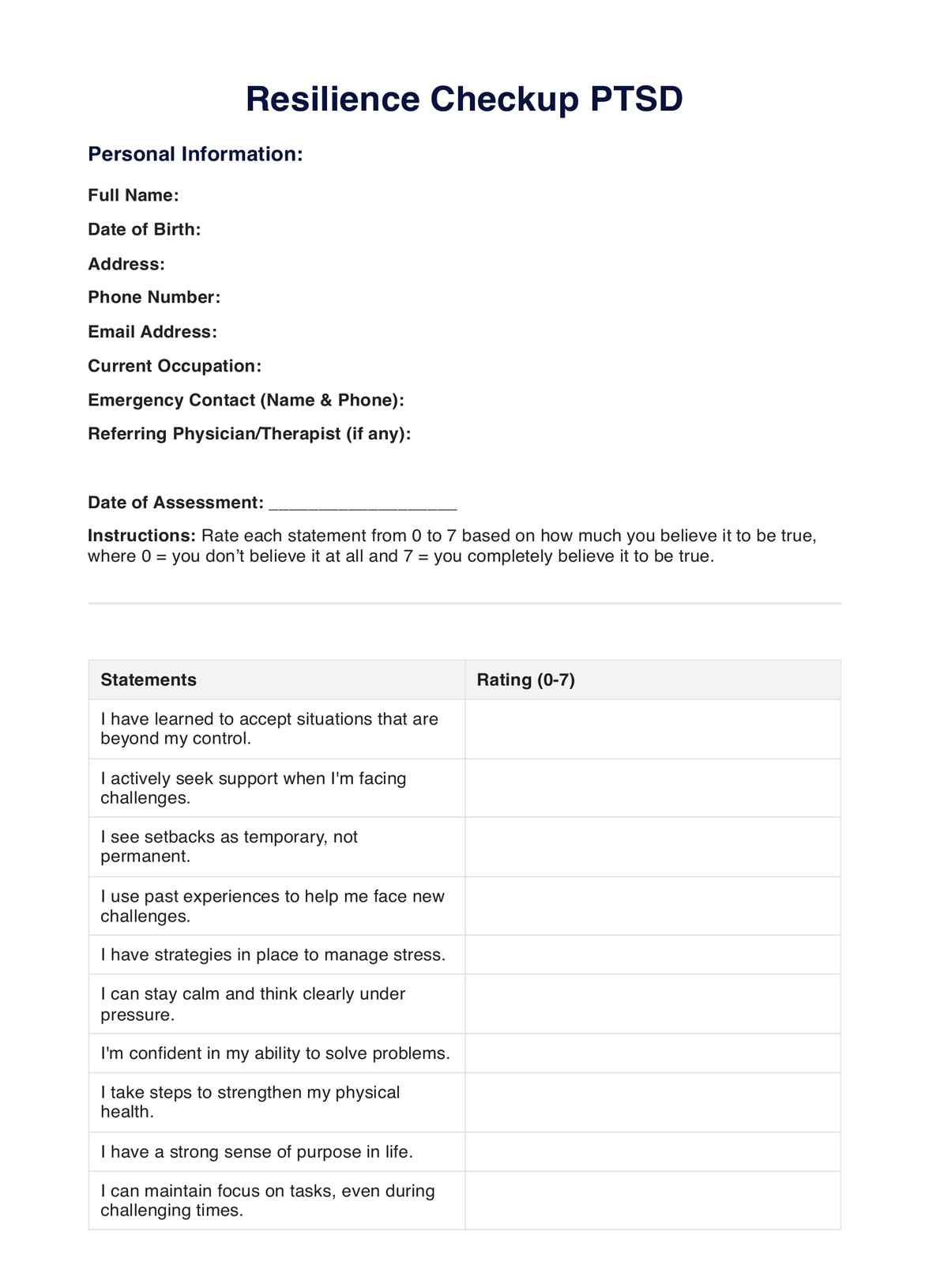

















-template.jpg)




















































































